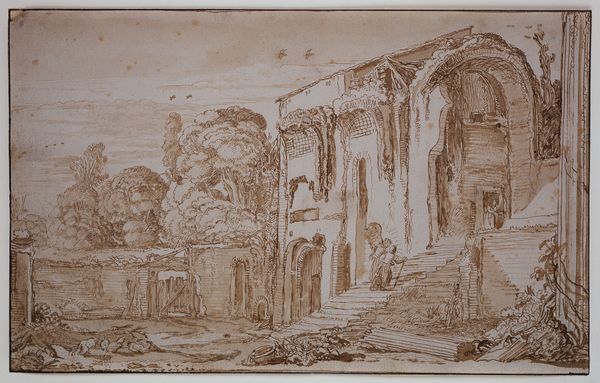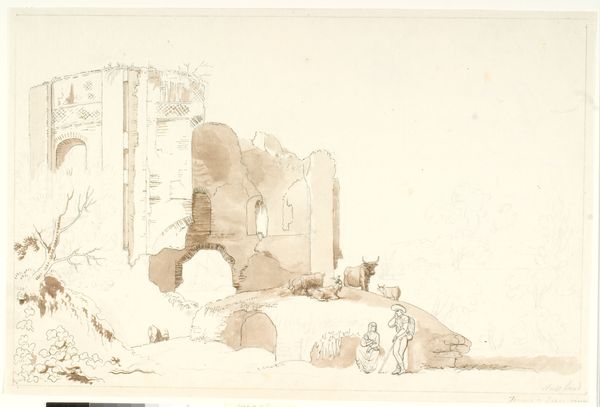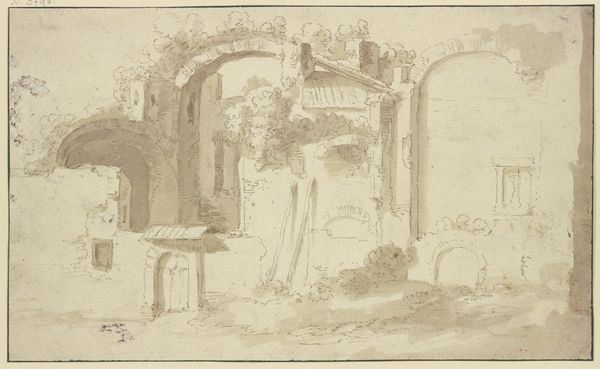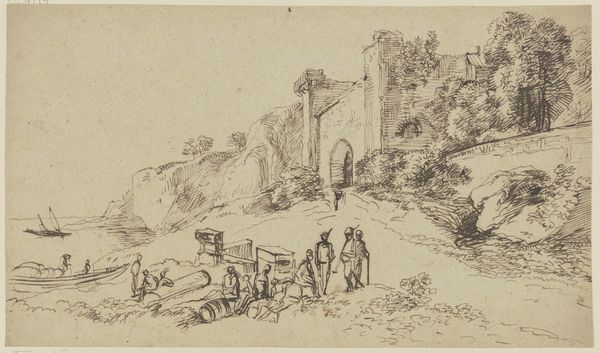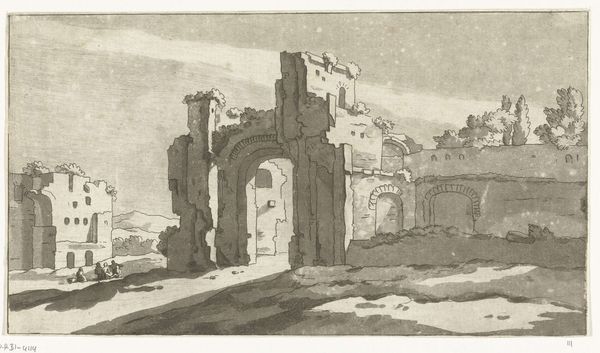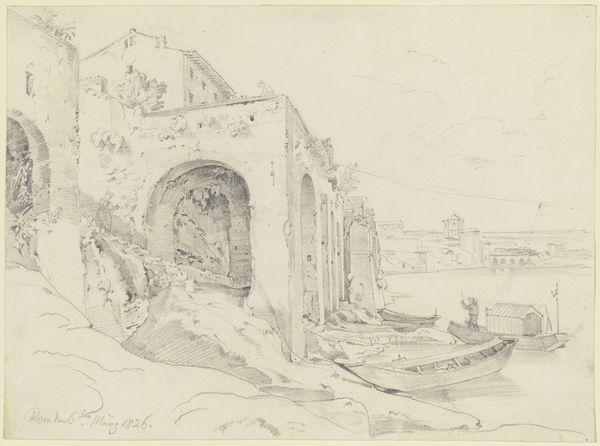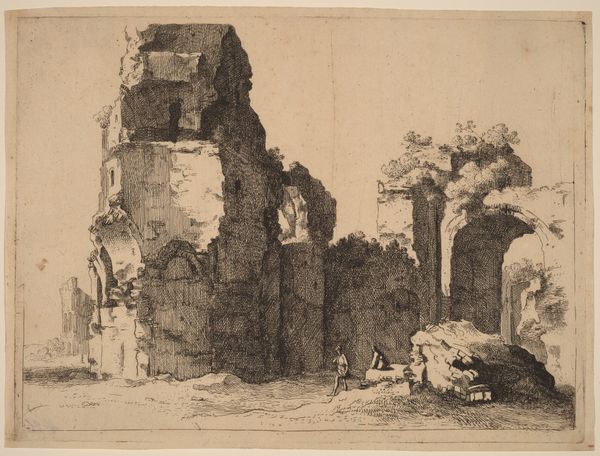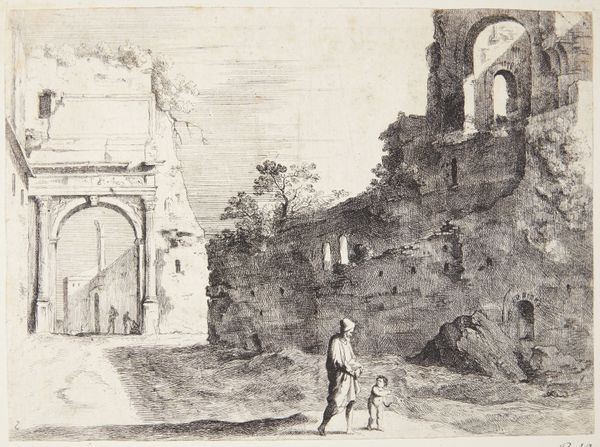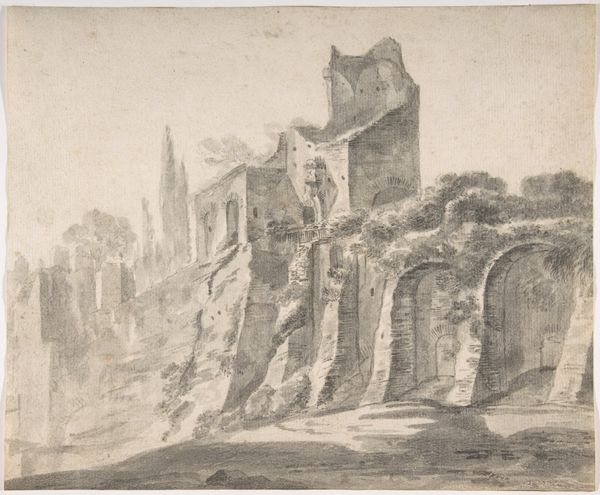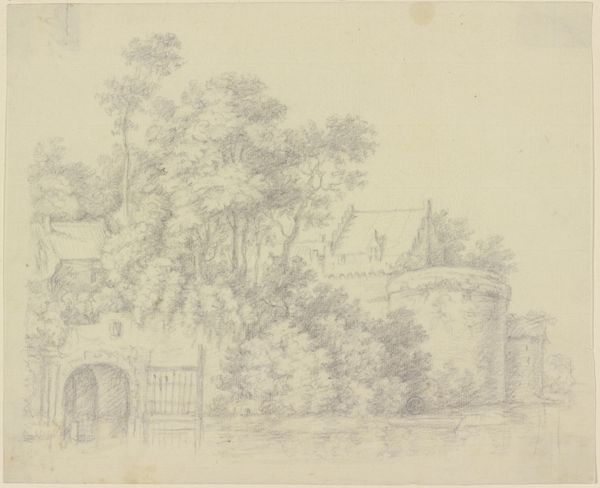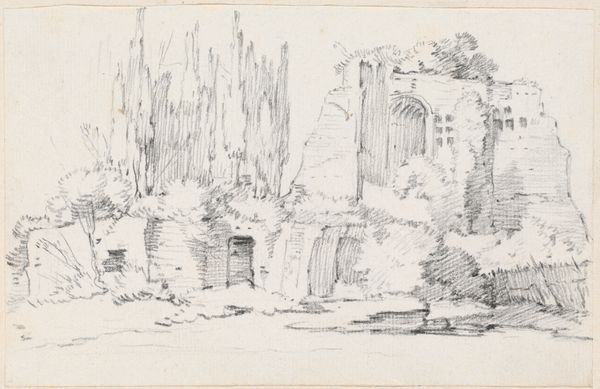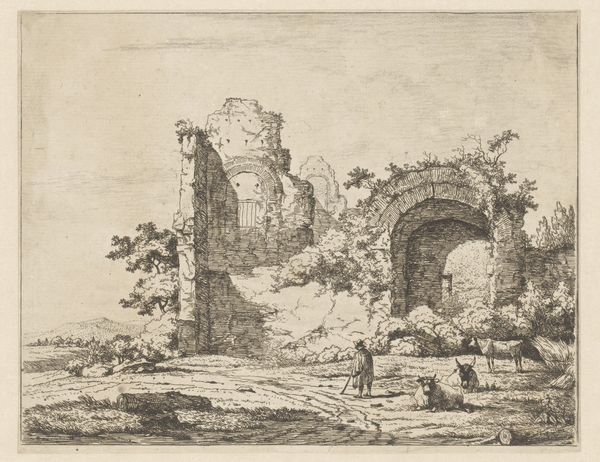
Die Porta Furba und die Acqua Felice mit dem Brunnen Clemens' XII. an der Via Tuscolana bei Rom 1834
0:00
0:00
drawing, paper, pencil, graphite, architecture
#
drawing
#
16_19th-century
#
landscape
#
paper
#
romanticism
#
pencil
#
graphite
#
architecture
Copyright: Public Domain
Editor: Here we have August Lucas’s 1834 drawing, “Die Porta Furba und die Acqua Felice mit dem Brunnen Clemens' XII. an der Via Tuscolana bei Rom,” rendered in pencil, graphite, and paper. I’m struck by the subdued tone and the detailed rendering of the architectural ruins. What compositional elements stand out to you in this work? Curator: The drawing offers a study in contrasts, focusing less on explicit narratives and more on the interplay between decay and geometric structure. Notice the composition; how the solid geometry of the aqueduct, rendered with precise lines, anchors the right side. Then, see how the fragmented ruin on the left acts as its counterpoint. What visual effect do you think this contrast achieves? Editor: It creates a sense of tension, a dialogue between the lasting and the crumbling. There's an almost unsettling stillness. Curator: Precisely. The artist’s choice of medium – pencil and graphite on paper – further reinforces this effect. The limited tonal range emphasizes form and texture. Observe how the light subtly defines the crumbling surfaces. Consider the texture alone; does the artist render decay, or the form? Editor: Both, I think. The medium lends itself to depicting intricate detail, capturing both form and the gradual breakdown of the material. Curator: Indeed. And it is through that detail, and its structural rendering, that the artist draws our eye toward its deeper formal relationship to the pristine geometries adjacent to it. A relationship between the real and the ideal. Are you understanding? Editor: I think so! It's fascinating how the artist used the structure of the ruin and the aqueduct to explore themes of time and transformation. Thanks! Curator: And our work of seeing is, ultimately, never done. Thank you for engaging with these ideas!
Comments
No comments
Be the first to comment and join the conversation on the ultimate creative platform.

